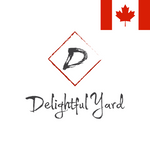Pruning is an essential aspect of maintaining a healthy and vibrant garden. By removing dead or overgrown branches, you promote new growth and encourage your plants to flourish. But with so many different pruning techniques available, it can be challenging to know which method is best for your plants. In this blog, we will delve into four common pruning techniques: pinching, thinning, heading back, and rejuvenation pruning. We'll discuss how each method works, the benefits they provide, and tips on how to use them effectively.
- Pinching: Encouraging Bushier Growth

Pinching is a simple yet effective technique for promoting bushier growth in plants. By removing the tips of stems or branches, you encourage the plant to produce new side branches. This method is particularly useful for herbaceous plants and annuals, as it helps maintain a compact, bush-like appearance.
To perform pinching, use your thumb and forefinger to remove the tip of a stem or branch, just above a leaf node. This will stimulate the plant to produce new branches at the point where the tip was removed. Pinching should be done regularly throughout the growing season to keep your plants looking full and healthy.
- Thinning: Improving Air Circulation and Promoting New Growth

Thinning involves the removal of entire branches or stems to improve air circulation and promote new growth. This technique is especially beneficial for fruit-bearing plants and trees, as well as shrubs and perennials that tend to become overcrowded. By thinning out older, weaker branches, you make room for younger, stronger growth, ultimately improving the overall health of the plant.
When thinning, use sharp pruning shears to remove branches at their base, close to the main stem or trunk. Be careful not to damage the surrounding tissue, as this can lead to infections or decay. Thinning should be done in late winter or early spring when plants are still dormant, and new growth has yet to emerge.
- Heading Back: Encouraging Lateral Growth

Heading back involves cutting back the tips of branches to encourage lateral growth. This technique is ideal for maintaining the shape and size of trees and shrubs, as it helps control their overall growth. Heading back can also be used to prevent plants from becoming too top-heavy, which may cause them to topple over or break in strong winds.
To perform heading back, use pruning shears or a saw to remove the tips of branches, cutting just above a healthy lateral branch or bud. This will encourage the plant to produce new growth from the remaining buds. Heading back should be done in late winter or early spring, before new growth emerges.
- Rejuvenation Pruning: Stimulating New Growth and Restoring Vigor

Rejuvenation pruning is an excellent method for reviving old, overgrown plants and restoring their vigor. By removing old, woody branches, you stimulate new growth and help the plant return to a more youthful, healthy state. Rejuvenation pruning is particularly useful for older shrubs and trees that have become leggy or sparse.
To perform rejuvenation pruning, use a saw or loppers to remove old, overgrown branches at their base. In some cases, you may need to remove up to one-third of the plant's total mass to achieve the desired results. Rejuvenation pruning should be done in late winter or early spring when the plant is still dormant.
Conclusion:
Pruning is an essential skill for any gardener, as it helps maintain the health and appearance of your plants. By understanding the different techniques available, you can make informed decisions about how best to care for your garden. Whether you're pinching back herbaceous plants, thinning out fruit trees, heading back shrubs, or rejuvenating an overgrown landscape, each pruning method serves a unique purpose in promoting plant health and vitality. With proper technique and timing, you can ensure that your garden remains a lush, thriving space for years to come.
Remember to always use sharp, clean tools when pruning, as dull or dirty tools can cause damage and introduce disease to your plants. Additionally, be mindful of the specific pruning requirements of each plant species, as their needs may vary. By staying informed and practicing these techniques, you will cultivate a garden that is not only beautiful but also healthy and resilient.
Happy pruning!
We are Delightful Yard, and we carry a collection of Greenhouses for your hobby gardening needs.

